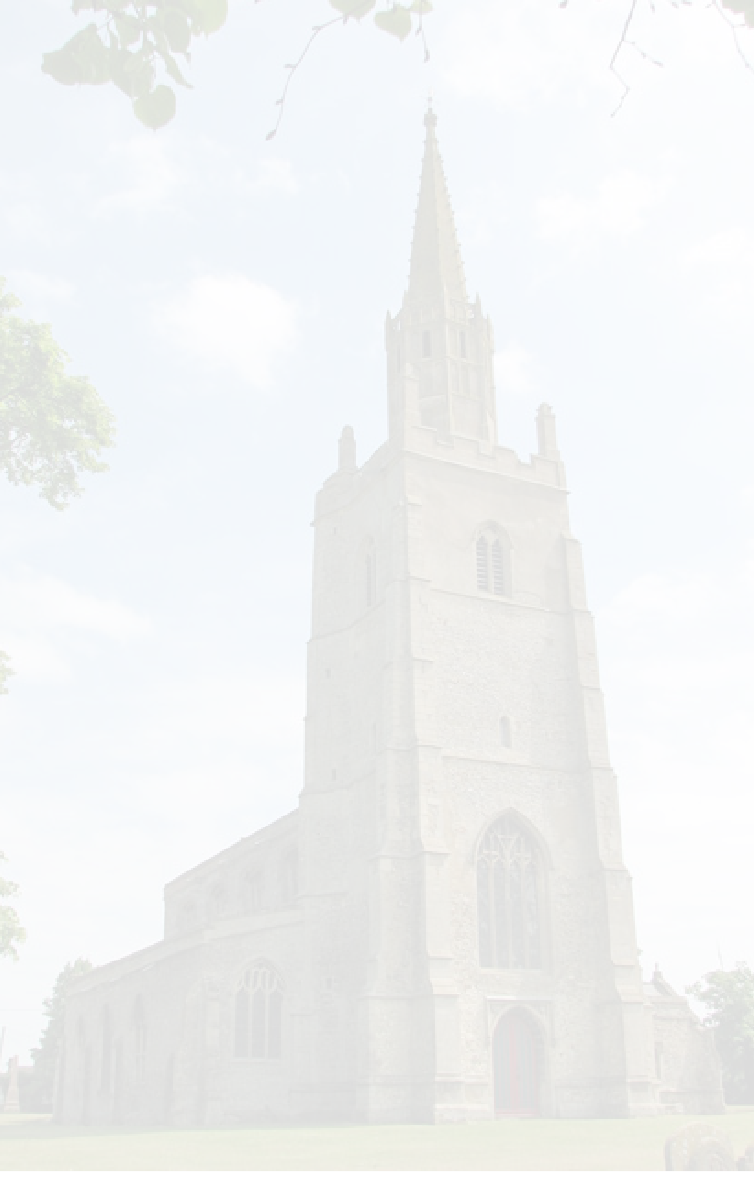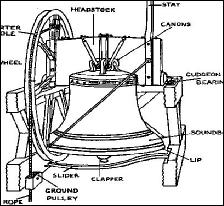

Current Site Adapted, Maintained & Hosted by DTKM from the Original “Methwold On The Net” site by Colin Marsland






Web Design & Hosting


Web Design & Hosting
Methwold.net uses Cookies to help us monitor, review and improve the site See Our Privacy Policy for details




METHWOLD TOWER BELL RINGERS
The Bell Ringers of St. George’s Church Methwold (OS Map Ref: TL732948 )
Tower Secretary: Alan Burbridge email Tel: 01366 727002
Peal: 8 Bells
Tenor Bell: 12-
Members of: Ely Diocesan Association of Bell Ringers (Wisbech District)
Formed in 1998

The Tower of St. George’s Church Methwold with its UNIQUE configuration of Tower, Octagonal Turret, and Spire
Today the 8 bell’s are hung one section lower than originally placed (where we see the louvers). This was to conserve the original building and put less strain on the fabric of this beautiful ancient structure.
The only downside to this being they are somewhat quieter than they would have been many years ago.
The Sound of Church Bells ringing through a village is synonymous with country life. Nationally, there are about 40,000 ringers who regularly ring for Sunday services as well as for special occasions, anniversaries and weddings. But more ringers are always needed. Everyone is welcome to learn, no matter what their age or abilities. So if you are interested, read on and find out what ringing is all about.
Methwold Tower Bell Ringers is a comparatively young organisation when you consider the church of St. George’s dates back to the 13th Century. This is because the bells had a period of over 50 years when they stood silent on the church floor. (See the history below)
What today’s Methwold ringers lack in history however they more than make up for in enthusiasm and dedication to the peal of bells that hang in the tower of St. Georges.
Every Wednesday evening throughout the year the team gathers on the platform above the vestry where they then practice the changes as they are called. The bells are then rung in earnest on a Sunday prior to the church service and of course to mark special occasions such as weddings, national events etc.
When the ringers were reformed in 1998 they were proud to be able to welcome back Reg Thornhill who had been part of the team to last ring the bells some fifty years earlier. Reg continued to ring with the team until 2008 when at the age of 90 he decided to retire.
If you are interested in learning to ring or if you know someone else who might be, we would very much like to hear from you
WE GET TOGETHER ON
WEDNESDAY EVENINGS
AT 7.30 PM
ST. GEORGE’S
CHURCH
METHWOLD
NORFOLK
IP26 4NT
OS Map Ref: TL732948
Always keen to welcome back lapsed ringers and to teach new recruits.
Learning to ring is fun and, once the basics of bell handling have been mastered,
you have a skill for life.
Most people have the ability to become a good ringer
Great strength is not required and people of all ages from 10
upwards are welcome
The present method of ringing began in the 17th Century when churches restored bells that had been lost or destroyed during the dissolution of the Monasteries. Before this, bells were chimed randomly, as still happens on the Continent. However, now a new mechanism was used. The bells were mounted with full wheels which allowed them to rotate through an entire 360 degrees to produce each sound. This revolutionary change meant that bells weighing several hundredweight could be controlled very precisely with minimal physical effort, allowing ringers to produce more even sound. This heralded the start of “change ringing”, the ringing of bells in pre-
METHWOLD TOWER BELL RINGERS

The Current Tower Team during one of their regular Wednesday night practice sessions. Plus, a short clip of training for the latest recruit Tina Camfield from Team Captain Alan Burbridge and also featuring long time ringer Michael Giles.
VIDEO CLIPS
The team produced a fascinating and now historic DVD available which tells the story of the re-
Watch a short clip featuring some extracts from the film, but for a real insight into all the hard work that went in, why not treat yourself to a copy?
Telephone: 01366 728379

READ THE DETAILS? SEEN THE SWEATSHIRTS? NOW BUY THE FILM:










Click To Stop This Clip

The Team in full flow
Training the lastest recruit
Clips from the full story
Methwold Bell ringers win the Double 2011
The annual bell ringing competitions were staged this year at Wiggenhall St. Mary Magdalen Church on Saturday 24 Sept 2011.
Two competitions are open to all bell ringing teams in the Wisbech District:
- The Novice Competition is open to all ringers from beginners to quarter peal ringers. A set ringing pattern has to be completed by all teams.
- The Methods Competition is open to all experienced ringers up to full peal standard. The team can select their own ringing pattern within a set number of changes.
Independent judges listen to the standard of ringing outside the Church and mark each team on the number of technical faults. A team of Methwold ringers entered the Novice Competition, comprising:
No. 1 Bell Alan Burbridge (Caller)
No. 2 Gill Giles
No. 3 Peter Crawley
No. 4 Les Howard
No. 5 Diane Matthew
No. 6 Matthew Mantle
The team had the lowest number of faults thereby winning the Novice Trophy. A team also entered the Methods Competition, comprising:
No. 1 Bell Alan Burbridge (Caller)
No. 2 Sue Annear
No. 3 Pat Coley
No. 4 Les Howard
No. 5 Diane Matthew
No. 6 Matthew Mantle
The team rang a Plain Hunt pattern and were successful in winning the prestigious Methods Trophy. It was a phenomenal success winning both trophies for the second year running especially as these were newly created teams.
My personal thanks go to all the ringers for their patience, dedication and commitment on practice nights and in the competitions, each of them are worthy winners.
Many family and friends came along on the night to lend their support which all maid for a great occasion.
British bell ringing is unique in the world with the bells rung through 360 degrees back and fourth at regulated distances to create their distinctive patterns. Methwold’s team is rightly proud in continuing the tradition which dates back 400 years.
METHWOLD’s TOWER HISTORY
St. George’s bells were re-
It takes about 6 months for a complete beginner to competently ring the bells and you don’t even need to be musically-
St. George’s has a dedicated team of 12 ringers and the ringing standard is constantly improving. They have won the Wisbech District Striking Competition many times which is no mean feat given the short length of service of the team.
The team are always looking to recruit new ringers though, to keep this ancient tradition going. Their services are certainly in demand -
As a group they also have an active social scene with events throughout the year such as BBQ’s, Car Rallies, Ten Pin Bowling, Quizzes a Christmas Dinner and various fund raising opportunities.
Everyone wanting to give it a try will be encouraged, so there is no need to feel nervous about going along; the members enjoy it and the sense of achievement is amazing.

Join us for one of our popular
QUIZ NIGHTS
See the Methwold.Net “What’s On” -
The Term
“To Ring The Changes”
Change ringing is the art of ringing a set of tuned bells in a series of mathematical patterns called "changes". It differs from many other forms of campanology (such as carillon ringing) in that no attempt is made to produce a conventional melody.
Today, change ringing can be found all over the world, performed in a variety of media; but it remains most popular in the context where, in the 17th century, it developed: English church towers. These typically contain a few large bells rigged to swing freely: a ring of bells.

The considerable inertias involved mean that each bell usually requires its own ringer. Thus, contrasted with a carillon, in which a large number of bells are struck by hammers, all tied in to a central framework so that one carillonneur can control them all, a set of such bells is comparatively unwieldy— hence the emergence of permutations rather than melody as an organizing principle.
